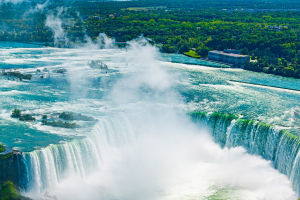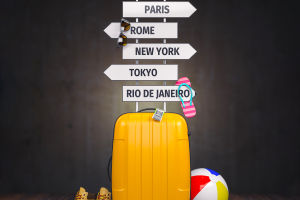If you're planning a trip to Japan and want to explore multiple cities, there's one thing seasoned travelers always recommend: the Japan Rail Pass, or JR Pass. But is it really worth the cost?
How do you use it effectively without wasting its value? Having traveled from Tokyo to Hiroshima in just 7 days using the pass, I can tell you—if you plan smart, this pass is not just convenient, it's a money-saving powerhouse.
What is the JR Pass?
The JR Pass is a special rail pass available only to foreign tourists. It allows unlimited travel on almost all JR (Japan Railways) trains, including the famous Shinkansen rapid trains, for a set number of days.
Types and Prices (as of 2025):
1. 7-Day Ordinary Pass: ¥50,000
2. 14-Day Ordinary Pass: ¥80,000
3. 21-Day Ordinary Pass: ¥100,000
4. Green Pass (First Class): Costs roughly 25–30% more
Available online or through certified travel agencies, the JR Pass must be purchased before entering Japan (or online at least a few days in advance for digital delivery).
When Is the JR Pass Worth It?
The JR Pass only saves you money if you plan to take long-distance trips. Here's a cost comparison:
• Tokyo to Kyoto round trip by Shinkansen (Nozomi): ¥28,000
• Kyoto to Hiroshima: ¥11,500
• Hiroshima to Tokyo: ¥19,000
→ Total: ¥58,500
With just these three rides, the 7-day JR Pass (¥50,000) already saves you ¥8,500. The more you travel, the more you save.
It's ideal if:
1. You're visiting 3 or more cities far apart.
2. You're taking round-trip journeys.
3. You plan to use local JR trains (like in Tokyo or Osaka).
Best Routes to Maximize Your JR Pass
Here's a sample 7-day itinerary that fully utilizes the pass:
Day 1–2: Tokyo
• Use JR lines (Yamanote Line connects major city centers like Shinjuku, Ueno, Akihabara).
• Visit Asakusa, Meiji Shrine, and try tonkatsu at "Maisen" in Omotesando.
Day 3: Tokyo to Kyoto
• Take Hikari Shinkansen (Nozomi not included in JR Pass).
• Visit Fushimi Inari Shrine, Gion, and Kiyomizudera Temple.
Day 4: Kyoto to Nara (day trip)
• Use JR Nara Line (45 mins one way).
• See the giant Buddha at Todaiji and enjoy deer park.
Day 5: Kyoto to Hiroshima (via Shin-Osaka)
• Explore Peace Memorial Park, then ferry to Miyajima Island.
• Try Hiroshima-style okonomiyaki at "Mitchan Sohonten".
Day 6: Hiroshima to Osaka
• Stop in Himeji to visit Himeji Castle (¥1,100 entry; open 9:00–17:00).
• Spend evening in Dotonbori for street food and neon views.
Day 7: Osaka to Tokyo
• Take a morning Shinkansen back to Tokyo in ~2.5 hours.
This route totals over ¥65,000 in train fare — all covered by the ¥50,000 pass.
How to Activate and Use the Pass
1. Purchase Online: Buy at the official JR Pass website or via Klook/KKday.
2. Exchange in Japan: After arriving, visit JR offices at major stations (like Narita Airport, Tokyo Station).
3. Set Start Date: You choose when the countdown starts. It must be within 30 days of pickup.
4. Show Your Pass: No need to insert it into ticket gates. Show it to station staff at manned gates.
5. Reserve Seats for Free: Use JR Midori no Madoguchi (ticket counters) or vending machines.
Local JR Lines You Can Use
Your JR Pass isn't just for rapid trains. You can also use:
1. Tokyo Yamanote Line: Loops all the major stations.
2. Osaka Loop Line: Great for sightseeing around the city.
3. Narita Express (N'EX): From Narita Airport to Tokyo (normally ¥3,000 one way).
4. JR Ferry to Miyajima: Covered by the pass — most people don't realize this!
Pro Tips to Maximize Value
1. Start your pass on the day you leave Tokyo to stretch its use over long-distance trips.
2. Pack your trips together. For example, do local Tokyo exploration before or after your JR Pass days.
3. Book seats during peak times like holidays and weekends. You can reserve in advance for free.
4. Combine with regional passes like the Kansai Thru Pass if your journey doesn’t justify the full JR Pass.
Where to Stay for Easy Access
Choose accommodations near JR stations:
• Tokyo: "Hotel Mets Shibuya" – right next to Shibuya JR Station
• Kyoto: "Hotel Granvia Kyoto" – located inside Kyoto Station
• Osaka: "Hotel Hankyu Respire Osaka" – 5 min walk from Osaka Station
• Hiroshima: "Hotel Intergate Hiroshima" – near Hiroshima JR and tram stops
Don't Miss These Local Eats
While traveling, try specialties in each region:
• Tokyo: Sushi at Tsukiji Outer Market
• Kyoto: Yuba (tofu skin dishes) and matcha desserts
• Hiroshima: Okonomiyaki layered with noodles
• Osaka: Takoyaki (octopus balls) and kushikatsu (deep-fried skewers)
Final Thoughts: Is the JR Pass Worth It?
Absolutely — if you plan your itinerary well, the JR Pass becomes one of the most powerful tools in your travel arsenal. Beyond the savings, it offers freedom, comfort, and efficiency unmatched by any other travel method in Japan.
Are you considering buying the JR Pass? Or unsure if your trip justifies it? Let me know your travel plans — I'd be happy to help you figure out the most cost-effective route!


